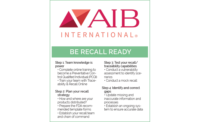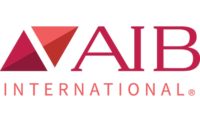How to prepare for FSMA regulatory inspections

Handling FDA and state regulatory inspections has never been easy, but at least companies knew what records they had to share and how to deliver a uniform company message by using designated plant spokespeople.
With Food Safety Modernization Act (FSMA) implementation, this has changed. Now regulators review risk-based hazard analysis documentation and have access to plant food-safety records, including training records with planned interviews for plant personnel. All plant personnel participating in the inspection must be prepared to interact with regulators.
The preventive control qualified individual (PCQI) will be responsible for developing, implementing and updating the food safety plan (FSP). Additional personnel performing and verifying preventative controls (PCs) can also be interviewed. Have a “game plan”—and test that plan—to ensure all personnel understand the regulatory inspection policy and how to react appropriately during inspections.
It is important to ask why this inspection is taking place and to request a copy of their notice of inspection form. The inspector should readily share this information, and the usual categories are “routine” or “cause” inspections (such as a food-safety consumer complaint), as well as a foodborne disease outbreak investigation or data collection. In all cases, ask questions if you don’t understand any requests and fully cooperate to help inspectors complete their assignment.
The inspector should explain the intent, such as to collect facility information on: raw materials, major suppliers, types of products produced, customers, types of transportation, FDA registration/state licensing and/or imported raw materials. They should also explain their inspection activities, such as observing plant operations, conducting interviews, reviewing and requesting records, taking pictures, and/or swabbing equipment, as well as collecting product samples for testing, ingredient labels or other requests. During this meeting, it is important to discuss your company’s regulatory policy if there are potential conflicts, such as not allowing pictures to be taken or if record requests need to be reviewed internally prior to submission. Remember: Records must be submitted with 24 hours after request. Typically, a regulatory form will be given to the facility listing the specific records and/or procedures requested.
You can use existing food-safety programs and the HACCP plan as documentation. It is advisable to have a predetermined template containing the required information prepared ahead of time and have alternate personnel trained to discuss this information in the absence of key personnel. At a minimum, inspectors will ask to see your documented hazard analysis even if you did not identify any additional PCs that require monitoring. Hazard analysis includes biological, chemical and physical hazards that could occur in the absence of an effective preventive control, and should apply to: raw materials, including radiological and economically motivated adulteration; process steps, including equipment and building conditions; and evaluation of environmental pathogens for ready-to-eat (RTE) products.
Note that hazard evaluations and conclusions must be based on illness data, scientific reports and regulatory guidance documents, so be prepared to show additional documentation if requested. For companies that have their corporate group performing hazard analysis, this information will still have to be available at individual plant locations unless this information has been shared with regulators prior to inspection.
If additional preventive controls are identified, they will consist of controls for process, food allergens, sanitation, supply chain and the recall plan, as well as other potential food-safety controls.
Preventive controls will need to have documented monitoring, any necessary corrective actions, verification and validation, as appropriate for the hazard. The importance of preventive controls and level of documentation necessary will be dictated by the potential to cause illness, injury or death and prevent recalls.
The next logical step is to test the readiness of the food-safety team by performing a mock regulatory inspection by an internal audit team, qualified consultant or third-party that specializes in GMP inspections.
Looking for a reprint of this article?
From high-res PDFs to custom plaques, order your copy today!









